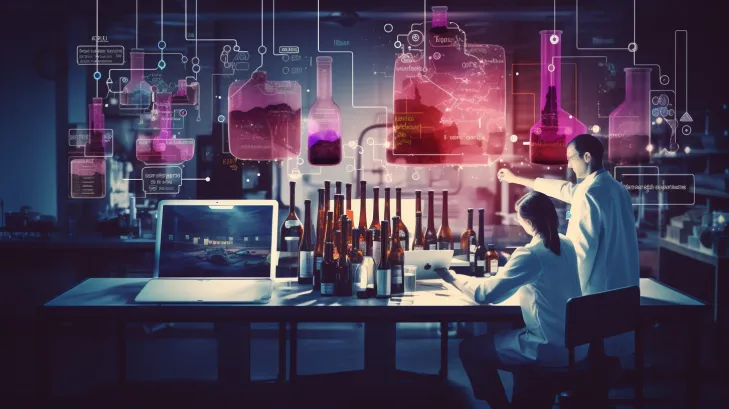Table of Contents
Researcher AI tool utilizing machine learning, the compounds in a bottle of wine can be analyzed and traced back to their respective estate.
Scientists have successfully trained an algorithm to utilize routine chemical analyses to track the origins of wines by the Researcher AI tool, potentially posing a threat to fraudsters who attempt to deceive consumers by selling low-quality wine as a premium beverage.
Researcher AI Tool Detects Wine Fraud with Precision
By utilizing machine learning, scientists were able to differentiate between wines by analyzing minute variations in the levels of numerous compounds. This enabled them to trace the origin of the wine not only to a specific vineyard region but also to the exact estate where it was produced.
Prof Alexandre Pouget from the University of Geneva in Switzerland has revealed that there is a significant amount of wine fraud happening, where individuals create fake wine in their garages, print labels, and sell them for exorbitant prices. However, he also shared that their chemical techniques have become sensitive enough to distinguish between authentic and fake wine. This is the first time such a breakthrough has been achieved.
The Researcher AI tool utilized gas chromatography to train the program. They analyzed 80 wines from seven different estates in the Bordeaux region of France, which were harvested over 12 years. This Researcher AI tool technique is frequently employed in laboratories to segregate and recognize the components that constitute a mixture.
Clustering Chateaux with the Researcher AI Tool

Instead of searching for specific compounds in the Researcher AI tool that differentiate one wine from another, the algorithm utilizes all the chemicals identified in the wine to determine the most dependable signature for each. The two-dimensional grid is where the program showcases its findings, with wines with comparable signatures being grouped.
Pouget stated that the initial observation that immediately caught our attention was the presence of clusters that align with particular chateaux. This Researcher AI tool promptly indicated that there exists a distinct chemical signature for each chateaux, regardless of the vintage. Pouget further explained that it is the collective arrangement of numerous molecules’ concentrations that sets apart chateaux. Each chateaux can be likened to a symphony, where it is not a solitary note that sets them apart, but rather the harmonious composition as a whole.
The Researcher AI tool plots unveiled numerous additional findings. Remarkably, the clusters’ positions mirrored the estates’ locations on the ground, as wines from three chateaux north of the Dordogne River were distinctly separated from four chateaux west of the Garonne River. Pouget stated, “When we project the chromatograms, we retrieve the Bordeaux map.”
Researcher AI Tool Unveils Insights and Challenges
David Jeffery, a co-author of the book Understanding Wine Chemistry and an associate professor in wine science at the University of Adelaide, stated that the potential of Researcher AI tools in machine learning in food and agriculture investigations is increasingly apparent with every new implementation.
A multitude of elements, ranging from the grapes and the soil to the microclimate and the winemaking techniques, impact the levels of compounds present in the wines produced at each chateaux. Although the program successfully identified the correct chateaux for the wines with an accuracy of 99%, it faced challenges in accurately distinguishing between different vintages, achieving a maximum accuracy of only 50%.
The study, set to be published in Communications Chemistry, proposes that machine learning could assist in fraud investigations by verifying if the wine corresponds to its label. In Europe, where counterfeit alcohol leads to €3bn (£2.6bn) in lost revenue each year, recent incidents have shed light on the extensive criminal networks operating in the industry.
Earlier this year, a group of criminals was found guilty of smuggling Spanish table wine into France and falsely presenting it as French. This fraudulent activity spanned several years and is estimated to have involved approximately 5 million bottles, with some being rebranded as bordeaux.
Although the primary use of the program is to detect fraud, Pouget mentioned that it could also be employed to oversee the quality of the winemaking process and guarantee a well-blended outcome. He expressed that this technology could assist in determining the optimal blending techniques to enhance the quality of wines.
Traditionally, only a select few winemakers with exceptional skills can perform this task, often at a high cost. However, with the availability of tools like this program, the production of exceptional blends could become more affordable, benefiting a wider range of individuals.





